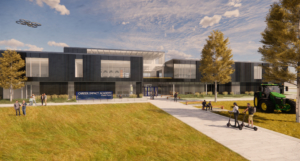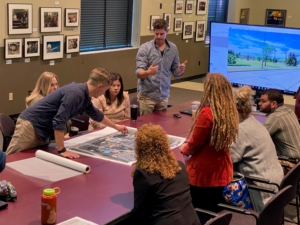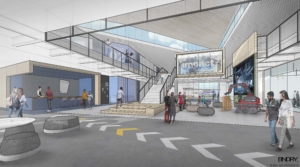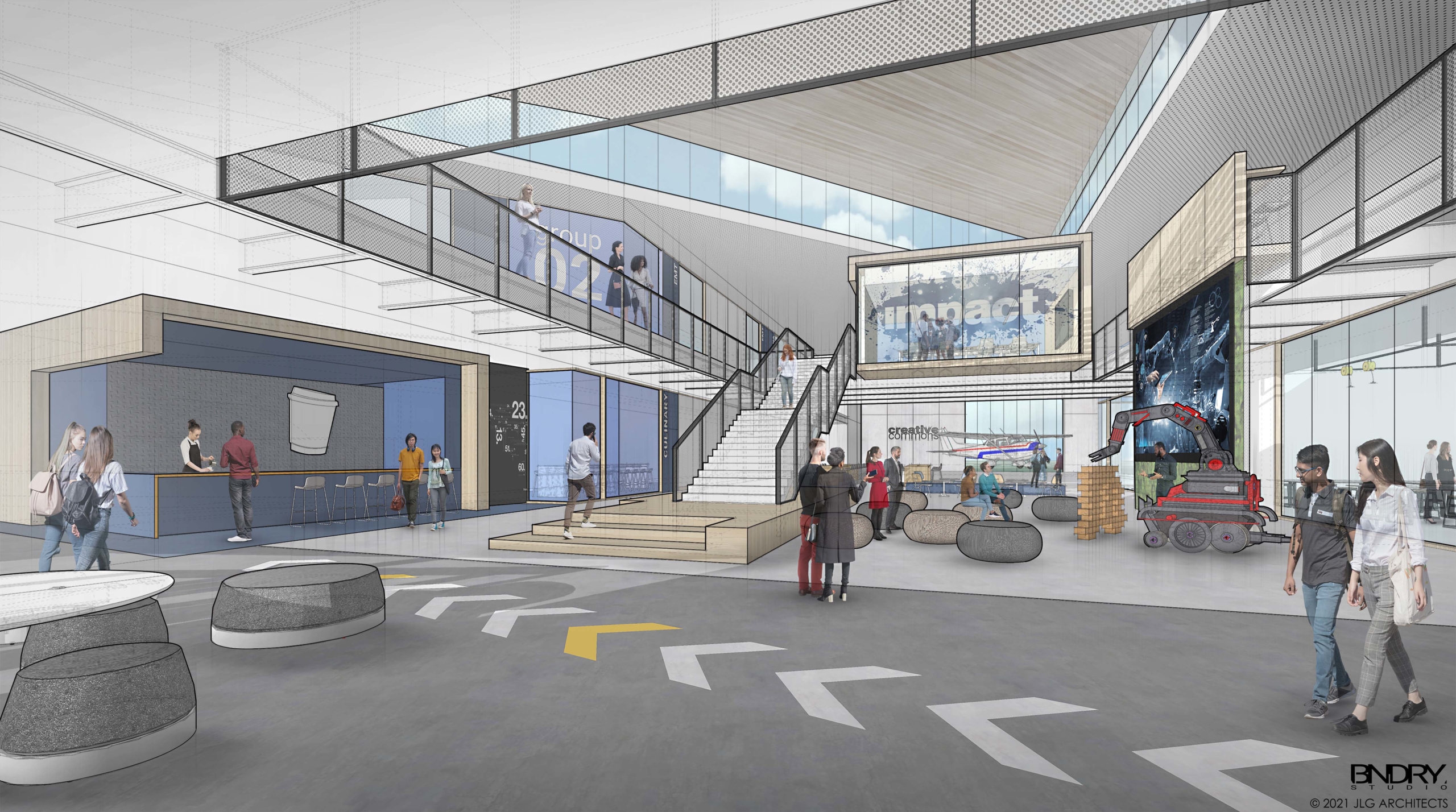In Grand Forks, North Dakota, most secondary career and technical education (CTE) programs are embedded within existing high schools. While this makes programs accessible for students within the schools, various factors can make high-quality CTE program development more difficult. Classrooms built for the traditional lecture style of instruction present unique challenges related to student capacity in hands-on lab settings. And administrators may be limited in the scope of what new and emerging CTE programs they can host.
These factors, combined with workforce shortages and an influx of federal funds, led the North Dakota Legislative Assembly to allocate a total of $88.3 million for the expansion or development of new CTE centers. Funding was sourced via the American Rescue Plan Act (ARPA) and the Capital Projects Fund. So, interested communities began a competitive application process to request up to $10 million. With the expectation that recipients secure a 1:1 match of local contributions, donations and pledges.

So, with education funding on the table, CTE educators in Grand Forks seized the opportunity to develop a dedicated regional CTE center.
To make it happen, stakeholders formed a collaborative partnership.
- Grand Forks Region Economic Development Corporation (EDC)
- The Chamber
- City of Grand Forks
- County of Grand Forks
- Grand Forks Public Schools
- University of North Dakota
- Lake Region State College
- Northland Community and Technical College
- And key employers within the region, including TrueNorth Equipment, Construction Engineers, and Lunseth Plumbing >amp; Heating
Further, subcommittees were established to develop grant applications.
- Budget
- Governance
- Programming
- Building
- Fundraising
- Marketing
Then, to learn best practices about high-quality CTE facility development, committee members conducted in-person tours and meetings at several CTE centers.
- Great Oaks Career Campuses (Cincinnati, Ohio)
- Warren County Career Center (Middletown, Ohio)
- Butler Tech Bioscience Center (West Chester, Ohio)
- Scarlet Oaks Career Campus (Cincinnati, Ohio)
- Moore Norman Tech: Franklin Road Campus (Norman, Oklahoma)
- Moore Norman Tech: South Penn Campus (Oklahoma City, Oklahoma)
- Sioux Falls Career and Technical Education Academy (Sioux Falls, South Dakota)
Here’s what we learned about developing a regional CTE center.

- Engage with the public early and often. Keep them informed and invite them into the planning process.
- Place learning lab spaces next to classroom learning spaces. This will allow students to learn and do at the same time.
- Address barriers like transportation and equipment access. Building CTE centers near industry partners, when possible, can increase opportunities for students.
- Develop career pathways that align with regional industry and/or education needs.
- Design program facilities to mimic real-world job environments.
- Incorporate employability skills into all course offerings.
- Offer dedicated career services support, such as sharing work-based learning opportunities, reviewing resumes and practicing job interviews.
- Require faculty to build strong network connections and maintain industry knowledge.
- Ask industry advisory committees to review curriculum on an annual basis to maintain industry standards and career readiness.
- Promote the regional CTE center as an opportunity for students to develop important skills they can use to succeed.
Build the future.

The grant application required building designs and renderings. And so, the project group chose JLG Architects as the principal architect for the Academy project. In turn, JLG Architects brought in BNDRY Studio, a firm that specializes in designing CTE facilities.
The team of JLG and BNDRY Studios highlighted the wide community support for the project. Stakeholders provided feedback and received updates throughout design and development. Key to this were valuable meetings with current students. Because what they wanted to see in the facility
was so important to know. Resoundingly, students wanted a facility they could be proud of, that showcased the hands-on learning within CTE, and that did not look like a current high school in design and functionality.
Design for collaboration and flexibility.

The new Career Impact Academy is designed around the creative hub. This space welcomes students, community members, and business partners into the core of the building and highlights each of the various programs offered in the new facility. The creative hub also supports students’ employability skill development by fostering collaboration across disciplines.
Primary design decisions were heavily influenced by student and industry partner voices. They wanted more open and connected learning environments that expose a variety of program types. So, in response, the team developed flexible lab spaces and shared program areas. The strategic placement of flexible partitions and furniture support an active and fluid environment. And this will allow CTE administrators to adjust for changing enrollment and curricula.
Support high-quality CTE.
To determine what career pathways best aligned with local needs, stakeholders assessed student interests, industry demand and relevant postsecondary options. Ultimately, they chose 10 pathways. And these represent a combination of existing CTE courses and emerging workforce opportunities in the region.
- Aerospace and Unmanned Systems
- Advanced Manufacturing
- Automotive Services
- Building Trades
- Computer Science/Information Technology
- Culinary Arts
- Engineering and Robotics
- Health Sciences
- Precision Technologies (Agriculture)
- Welding
The Career Impact Academy brings workforce development partners together to support the Grand Forks, North Dakota, community. Learners of all ages can benefit from training. And the broader population benefits as well. For example, the Academy’s Health Sciences program has partnered with a community health system and volunteered its facilities to provide medical services.
In all, the state received 17 grant applications, and the Career Impact Academy was awarded the maximum $10 million in matched funds. With the support of our local, state and federal communities, Grand Forks is taking an intentional approach to workforce development that will make an impact on the region for many generations to come. The new regional CTE center is an asset to our region and a testament to our future.
Eric Ripley is the executive director of CTE and technology for the Grand Forks Public Schools and Grand Forks Area Career and Tech- nology Center in North Dakota. He also serves as vice president of ACTE’s Administration Division and on the board of directors for National Council of Local Administrators.
Scott Krenner, AIA, CPD, is a partner and architect at BNDRY Studio, which provides leadership in career and technical education planning and design.
Tyler Whitehead, AIA, NCARB, is a partner and architect at BNDRY Studio, which provides leadership in CTE planning and design.







